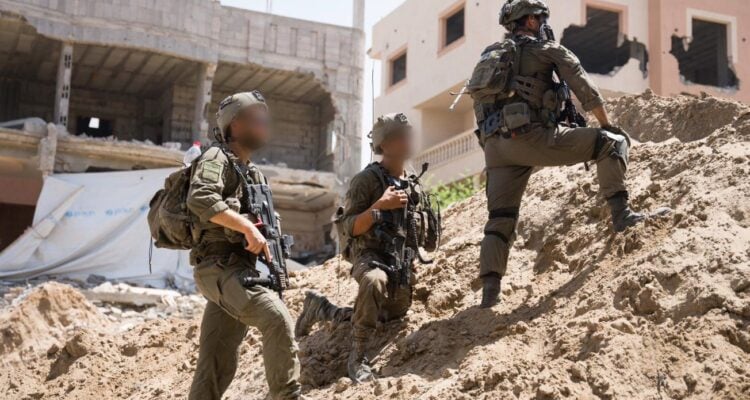Hamas has reportedly kept 20,000 terrorists in reserve for expected battles with the IDF.
By Batya Jerenberg, World Israel News
The Israel Defense Forces are preparing for a major offensive in Gaza as the hostage negotiations repeatedly hit dead ends due to Hamas’s rejection of proposed deals.
As part of the IDF’s “mega-maneuver,” the Israeli Walla news site reported on Sunday that the IDF would split Gaza City into two parts, utilizing troops deployed from other sectors, such as Lebanon, Syria and Judea and Samaria.
In the part IDF would control, it would set up aid distribution centers run by American civilian companies that have yet to be named, who would provision civilians directly, to prevent Hamas from stealing the aid and enriching itself as it has until now.
It is hoped that this would weaken Hamas’s grip on the population as well as strain the organization itself.
A large reservist call-up would also be necessary for a wider operation than is currently being conducted in the Strip, some in parts that the IDF has not hit until now.
In a visit to IDF positions in northern Gaza last week, Defense Minister Israel Katz said that the current military operations in the Strip would continue because “it puts pressure on Hamas to first of all free the hostages.”
“The more it clings to its refusal, the more we will intensify the blows it will suffer until it’s defeated and the hostages are returned,” he said.
The IDF resumed its maneuvers in Gaza last month, after the terror organization refused to continue the exchange of hostages in return for a weeks-long ceasefire, thousands of tons of humanitarian aid, and the release of thousands of Palestinian prisoners.
The military believes Hamas was surprised by the renewal of fighting, in which several hundred senior terrorists and Hamas civilian leaders were killed in more than 1,300 attacks by land and air that also destroyed terror infrastructure and command centers.
The army controls some 40% of the Gaza Strip, especially in the north and south, and has fashioned a new corridor, called Morag, to cut the town of Rafah, which borders Egypt, off from the major city to its north, Khan Yunis.
Although the army withdrew from the Netzarim Corridor that cut east to west through part of the centrally located Gaza City in the last ceasefire, it never left the Philadelphi Corridor on Rafah’s southern edge, which borders Egypt.
This area is considered crucial to block off the weapons pipeline that had been Hamas’s “oxygen,” especially after the Islamist group took over the coastal enclave in a violent coup against the Palestinian Authority in 2007.
The IDF believes that Hamas, which lost some 20,000 fighters over the last year and a half, has recruited about the same number back into its ranks, but that these are far less trained and lacking senior commanders due to Israel’s prolonged campaign in the Strip.
They are also reportedly being held back by Hamas, holed up in the displacement camps and humanitarian zones, to preserve them for the allegedly upcoming battles.
They have not stopped their surveillance activities, however, and have popped up to conduct brief attacks when they see an opportunity, before disappearing again into their tunnels.
It was this kind of attack that ended on Saturday in the death of a Bedouin tracker, Warrant Officer Ghaleb Sliman Alnasasra, who was killed while attempting to rescue other soldiers who had been wounded in an ambush.
Hamas and other terror groups are still holding 24 living hostages and 35 who are known to be dead, including one soldier, Hadar Goldin, who was killed in 2014’s Operation Protective Edge.





